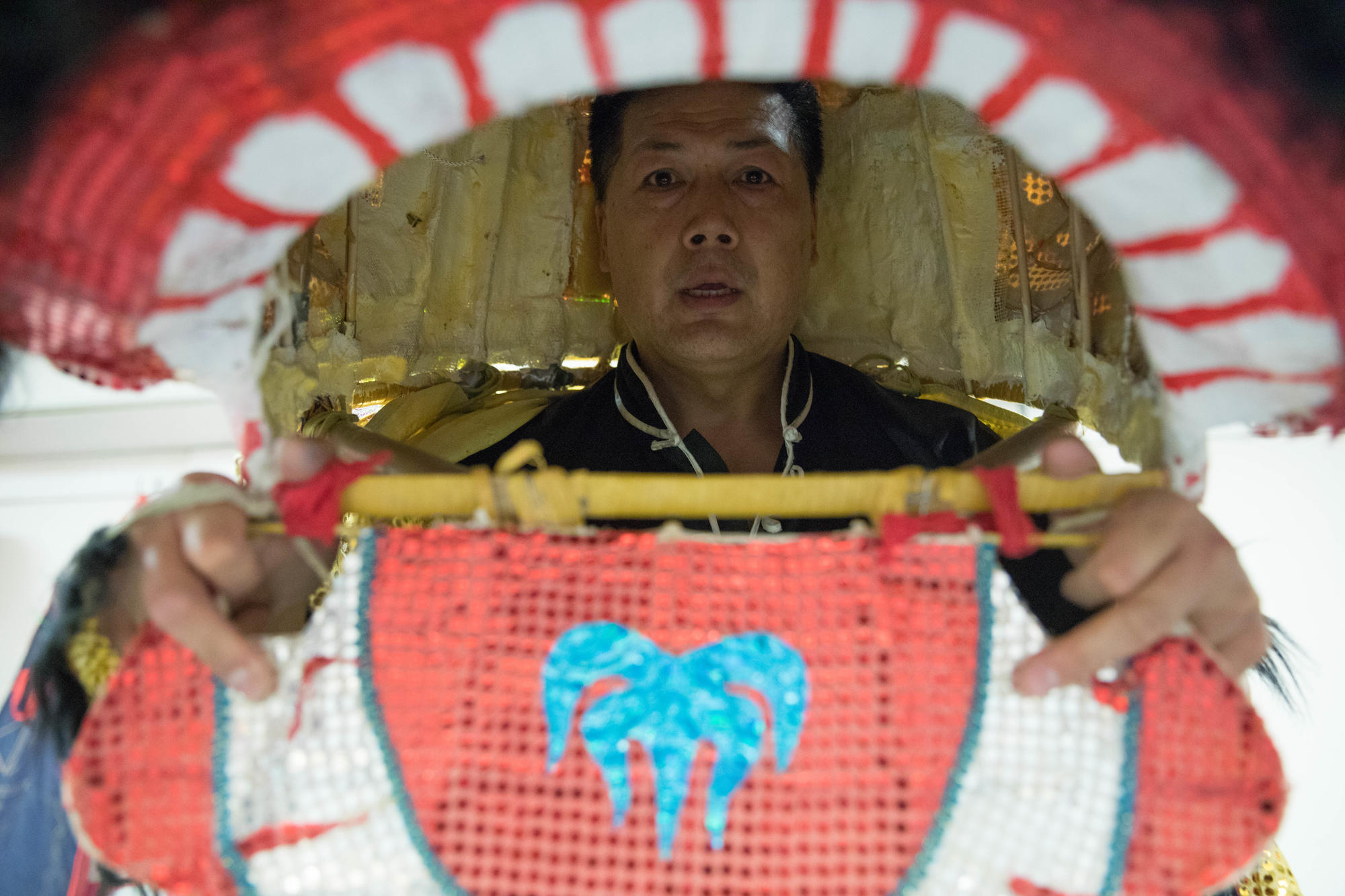At the Northwest Kung Fu Academy in Seattle’s Chinatown-International District, the artful practice of lion dancing is an all-year-long affair.
Inside the school’s nondescript building on Maynard Avenue, where the walls are adorned with lion masks and the green tea is freshly brewed, students practice Chinese Kung Fu.
Kung Fu is a test of the mind and body; it requires discipline, integrity, consistency and sacrifice to learn and do well.
“There are many styles of Kung Fu and lion dancing,” explains Sifu David Leong, the owner of the academy. “Ours requires strong moves of the head and tail that show the lion is the king of the jungle. Those can only be achieved by constant practice.”
Leong has been teaching the martial art for more than 40 years; he’s performed in films alongside Jackie Chan, Steven Seagal and Jean-Claude Van Damme.
Sifu David F. Leong practices a high kick with his class on a recent morning at Northwest Kung Fu and Fitness. “I don’t charge my students much because I know its difficult and sometimes people will start and realize it’s not for them. In order to really start understanding Kung Fu it takes time. . . six months at the very least.”
Northwest Kung Fu and Fitness lion dancers dance around firecrackers exploding in the storefront of an International District business. The firecrackers, like drums, cymbals and gongs, are meant to help scare off the bad spirits and bring good luck to business owners who give red enveloped offerings to the lions.
“Anyone can purchase a lion costume online,” Leong says, “but being able to actually perform the dance well requires much practice and determination.”
Lion dancing dates back thousands of years to the Han Dynasty in China, when lions were still only a myth. In Chinese culture, this auspicious beast is meant to bring good luck to those celebrating Lunar New Year, which begins Feb. 16. But lion dancing is also traditionally performed at other special occasions such as weddings or the opening of a new business.
Last Sunday morning, Leong and his team of dancers kicked off the Year of the Dog celebration at the neighborhood’s Hing Hay Park. As drums sounded, Leong’s students danced through the streets in lockstep with their partners, quickly jutting the bamboo and papier mache lion masks in seamless movements. Thousands of people who were in attendance watched, smiled and laughed.
The lion snaps one way and then pops in another direction.
Leading the lion through the neighborhood as if he were taming it was Dai Tao Fut, a big-headed smiling character resembling Buddha. The lion dance symbolizes getting rid of the previous year’s bad luck and wiping the slate clean for the year ahead.
“I’m upholding these ancient traditions in my own way, the best way that I can, and trying to not ever let them die,” says Leong, who has been performing with his dancers in Seattle since 2001.
“There are lots of senior citizens from China who immigrated to Seattle years ago and now live in this neighborhood,” Leong says. “Elders have come up to me with tears in their eyes thanking me for the experience, telling me that it brings them back to their villages in China.”
Lunar New Year events will kick off this weekend with various celebrations in the weeks ahead.















